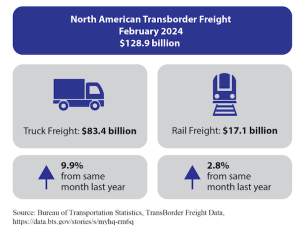The GMA 2005 Logistics Survey found that transportation costs have increased 23% to an average of $1.69 per mile in the past three years. In fact, transportation now accounts for 62% of all logistics costs. The survey concluded higher than anticipated fuel prices were a major contributing factor to the increasing cost of transportation.
In addition to fuel prices, the GMA survey found that changes to the hours-of-service regulations for truck drivers had a domino effect. By limiting the average distance a truck driver can cover in a single day, carriers found it more difficult to retain enough drivers to meet demand and overall shipping capacity dropped. Additionally, the survey respondents reported that more retailers are relying on manufacturers to address the challenges of moving freight in today's environment.
"For CPG companies, responding to the needs of retail customers and reducing costs are constant goals," said GMA Senior Director of Industry Affairs Karin Croft. "However, achieving these goals is more challenging than ever as transportation costs continue to escalate."
Consumer products companies are addressing increased costs, reduced shipping capacity and retailer concerns in a variety of ways, according to the survey. Companies are shifting to different modes of transportation where possible, better utilizing trailers, taking advantage of continuous move opportunities and partnering with carriers to secure year-round capacity.
"Current margin pressures are severe," said Karen Butner, associate partner, IBM Institute for Business Value. "In an effort to improve customer service and reduce costs, we see many consumer products companies reducing the fixed costs and capital requirements of supply chain operations and moving to a more variable cost structure that can be controlled and managed 'on demand''"
For the first time, The GMA 2005 Logistics Survey also asked respondents about their compliance with information management initiatives, including RFID and data synchronization. Executives participating in the survey confirmed the following findings:
- RFID is being fully implemented within only a small percentage of consumer products companies, with the majority (69 percent) investing only enough to comply with retailer demands.
- Ten percent of respondents stated that RFID was extremely effective in meeting their business objectives.
- Implementation of data synchronization continues to progress, with 52 percent of survey participants reporting a moderate to high level of adoption.
Other issues addressed in the survey include:
- How CPG companies are responding to increasing retailer demands for customized packaging and/or specialized, floor-ready displays
- To what extent manufacturers believe they have been affected by Sarbanes-Oxley in the areas of trade promotion, freight payment, inventory control and customer invoice audits.







